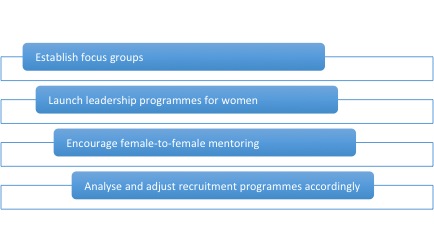Despite the plethora of technological advances and diversity and inclusion efforts of the past few decades, the stark gender bias in leadership roles still remains. Women are more likely to attend college, graduate, and enter the workforce, yet there are less than 5% of females at the helm of global multinational organisations.
Therese Sevaldsen, Head of Human Resources for the Middle East and Turkey at Philips, discusses women in leadership roles and the unconscious gender bias that still exists today.
Even though women make up approximately 50% of the global workforce, their representation in leadership roles still lags far behind. Companies have made great efforts to hire more female staff, but the problem of how to advance women up the leadership ranks still persists.
“It’s an unconscious bias,” says Therese Sevaldsen, Head of Human Resources for the Middle East and Turkey at Philips, who believes that organisations and hiring managers do not set out to promote or hire mostly males into leadership roles. “However, you’re more than likely recruiting or promoting someone like yourself, and while that is normal, it is detrimental to creating a diverse workplace.”
Getting the Balance Right
So is the key to solving the leadership gender imbalance in your organisation as simple as hiring and promoting more women? Sevaldsen says yes and no. “A part of the problem is in the way we women think. We have a tendency to work harder and harder, and then believe that our hard work will be recognised and rewarded. But it doesn’t work that way.”
Men are great at getting the exposure. They speak up. They take chances. “These are generalisations and can’t be applied to all, but on average, women are more humble. We wait until we can do 80% of a job, and then we wait until we can do it well before we raise our hands for a role or promotion. But men are more likely to think I can do about 25%, I’ll give it a go. Men are more inherent risk takers versus women need to feel certain that they can do the job.”
3 Steps to Achieving Gender Balance in Leadership
Step 1: Start by creating awareness
Sevaldsen advises that managers talk about the gender balance in management meetings, discuss it at the next strategy session. Make it a strategic initiative.
Step 2: Then commit
Simply telling the Head of Talent Acquisition or Talent Management that your organisation wants more female leaders is far from enough. Senior managers, regional and line managers must all be aware of what the company is trying to achieve.
“At Philips, every time we are recruiting for a senior role, we ensure that we short list at least one female,” says Sevaldsen. “It’s not always possible, but we try. And with this strategy we have succeeded in having 36% of the leaders in our Middle East offices to be female.”
Step 3: Now create the culture
Some women feel the pressure to adopt more masculine traits to their leadership style, and this could be demoralising over time. Men and women are different, and they both bring valuable skillsets to the strategy table that make an organisation more productive and bring it closer to its customers, simply by having a diverse set of employees.
Different situations require different styles, and the abilities to use one’s emotional intelligence and lead with an inclusive and collaborative approach are highly valuable skillsets–regardless of gender.
Here are a few things Sevaldsen recommends for some quick wins:

Career vs. Family
“Don’t limit yourself to these two options,” suggests Sevaldsen.
The work-life balance is more of an ebb and flow than a stationary state of existence. Any working mother will tell you it’s a juggling act that requires effective time management and the need to set clear expectations from the outset. Sometimes a high-value work project will require more of your attention, while at other times a sick child or a school performance will become priority.
Sevaldsen advises: “Choose your employer wisely. If you have younger children, look for flexibility so that you have the option to work from home as needed. Sometimes it is necessary for us to flex between the workplace and our homes, between family and career, and this isn’t a bad thing. These are facts of life. And you’ll be surprised what an amazing role model you are to your children and to the future female leaders.”
 René Rosso
René Rosso Kirsty Jucker
Kirsty Jucker Andrea Merrigan
Andrea Merrigan Orelia Chan
Orelia Chan Stanislav Medvedev
Stanislav Medvedev Fleur Daniell
Fleur Daniell Finian Toh
Finian Toh Tim Rayner
Tim Rayner Nicola Hasling
Nicola Hasling


